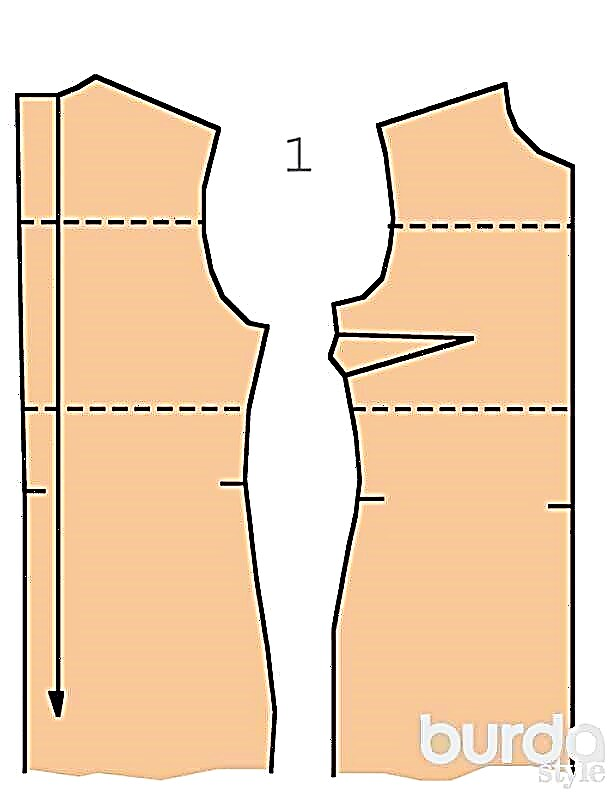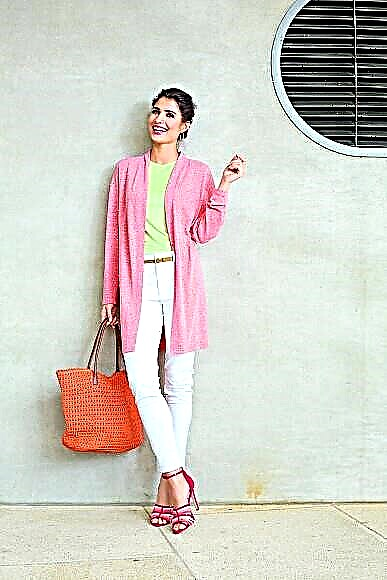The word "batik" is associated with the sea, the sun, expensive resorts. And batik is always in fashion, because such handmade is always exclusive ...
Patterns that are always in fashion
The word "batik" is associated with the sea, the sun, expensive resorts. And batik is always in fashion, because such handmade is always exclusive ...
Batik is surprising not only in that it provides the opportunity to paint the fabric with unique patterns with fascinating color transitions and influxes, but also in the fact that each thing becomes unique.
Another feature that attracts primarily people with imagination is that it is never impossible to predict in advance what the pattern will be. It resembles a carefully wrapped gift - you untie the ribbon after the ribbon, remove the packaging and everything inside of you is overwhelmed with the sweet feeling that some miracle is lurking there ...
In this master class, we will present the basic techniques for making batik. After the operations shown in the photo gallery, the fabric needs only to be additionally dyed with special textile paint (read the instructions on the packaging first).

Basic for batik
Strong threads (top middle).
Using clips and various patterns (top right), you can make a more or less strict geometric pattern.
Threads for batik (top right next to the clips).
The stitched and gathered fabric (bottom right) as a result of staining forms different patterns, for example, lines and zigzags.
Light cotton fabric is bound with rubber rings to get a circular pattern (in the center).
Classic twisting technique (bottom left). And such a dense twisting of the fabric (in the middle left) gives the honeycomb pattern.
A plastic tube entwined with fabric and thread (in the middle left, slightly higher) forms diagonal stripes.
Ordinary items such as a vegetable net (top left) are also used in batik making techniques.

Circles
How to create circles
Step 1
On a flap of cotton fabric 40 x 40 cm in size with a marker, the paint of which is completely washed off with water, put the dots in a row with an interval of 5 cm. Clamp the first point of the first row, as well as to tie between the thumb and forefinger of the left hand.




Step 2
Press the end of the thread firmly with your thumb to the point of fabric stretched upwards.
With your right hand, twist the thread so that the thumb and forefinger form a loop from the thread.
Step 3
Hold the tip of the fabric under the point under the crossing of the threads, pull the thread loop under the tip of the fabric and tighten it tightly. Thus process point by point.
Tip: to get a pattern of several scatter circles, under the tip of the fabric with a point, tighten, sequentially lowering down, several thread loops.

Diagonal stripes
How to create diagonal stripes
Cotton strips approx. 20 cm diagonally wrap around a plastic pipe (diam. Approx.10 cm, length approximately 50-100 cm), fix the fabric at each turn with a masking crepe tape. Wind the thread evenly over the fabric in the opposite direction.

Thread the first 10 cm, remove the masking tape. Put the pipe on a flat surface, slide the fabric down from above, folds should form on it. Thus process the entire fabric. Finally, fix the thread with a knot or masking tape.

Linear pattern
How to create a linear pattern
On a flap of cotton fabric 40 x 40 cm in size along the weft thread, iron the fold lines with an interval of 5 cm. Fold the fabric along the first line and sew with a double thread close to the bending with “forward needle” stitches. Fasten the ends of the threads with knots.



At the same time, leave the long ends of the threads hanging, so that the fabric can then be gathered. Treat all ironed crease lines in this way. Thread the threads evenly and pick up the fabric. Tie the ends of the threads tightly with knots and cut.
For a pattern in a cage, the fold lines are ironed along the longitudinal and transverse threads of the fabric, and then stitched as folds and seized on all four sides. After dyeing and washing, remove the threads so that the pattern becomes visible.
Tip: You can vary the interval between the crease lines or stitch zigzag folds.
Photo: Ahim Graf (1), Janis Gunner.



